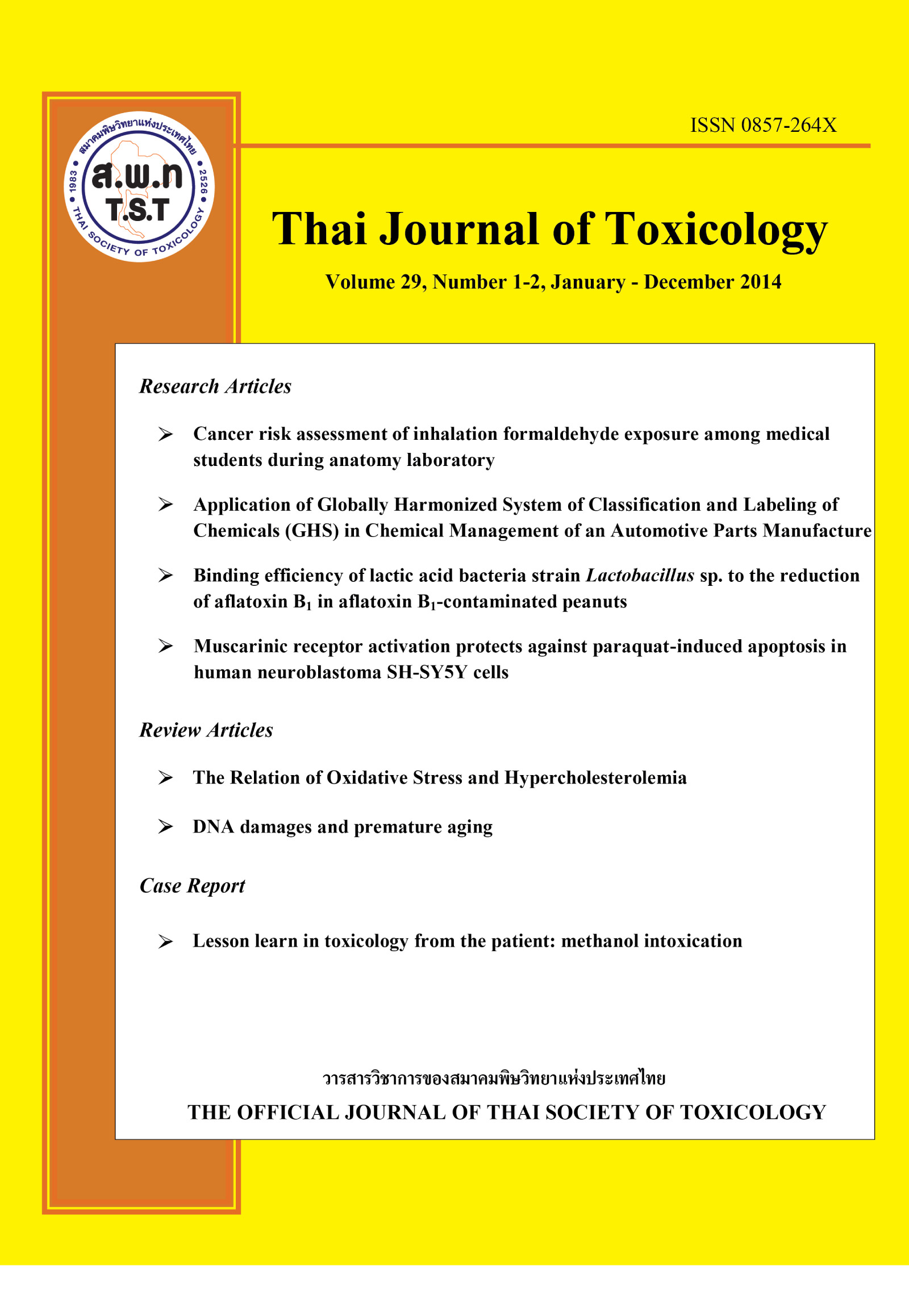Binding efficiency of lactic acid bacteria strain Lactobacillus sp. to the reduction of aflatoxin B1 in aflatoxin B1-contaminated peanuts
Main Article Content
Abstract
Exposure of aflatoxin B1 (AFB1) contaminated in foods has been known as a cause of hepatocellular carcinoma. Therefore, this study aimed to investigate the decontamination processes of AFB1 by using lactic acid bacteria (LAB); Lactobacillus pentosus, L. plantarum and L. casei subsp. rhamnosus to reduce AFB1 in AFB1-contaminated peanuts. AFB1 was extracted and analyzed by high performance liquid chromatography equipped with florescence detector (HPLC-FLD). Results showed ability of LAB to bind AFB1 (50 ng/ml) through experimental period (0-120 hours) were found. At 24 hours, the maximal binding time, %binding of aflatoxin fraction (%BAF) for L. pentosus, L. plantarum and L. casei subsp. rhamnosus were 55.77%, 51.26% and 47.98%, respectively. However, %BAF for the binding to AFB1 in AFB1-contaminated peanuts were 27.48%, 23.93% and 23.58%, respectively when compared to tested samples without LAB, indicating capability of LAB to reduce AFB1 from peanuts. Further study was performed by using in vivo digestion model to verify the bacterial binding capability in the digestive system. Tested bacterial strains exhibited %BAF at 55.54%, 38.78% and 12.10%, respectively. The increase and decrease of %BAF when compared with the condition devoid of digestive fluids could be accounted from the amount of AFB1 released from peanuts or condition that affected bacterial stability. Results showed that Lactobacillus sp. were capable of binding AFB1 in peanuts in the humanmimic digestive system which might imply possibility for the use of LAB to reduce AFB1 contamination in foods and could be expanded for product development in the future.


